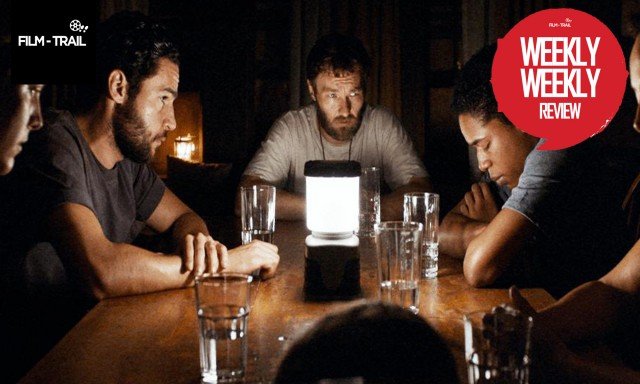Review Film: IT COMES AT NIGHT (2017)

Arthouse horror, hipster horror, or the so-called Steve Rose of The Guardian, post-horror (more meaning of the term?) Increasingly sticking out lately. The titles of The Witch and Under the Skin can be classified as such species, where slow tempos, atmospheric priorities, invisible threats rather than jump scare, metaphorical stories, are some of the constituent criteria. It Comes at Night by Trey Edward Shults (Krisha) is similar, trying to provoke fear from the mind rather than the sense of sight. The approach that split the opinions of critics and ordinary audiences, referring to the comparison score of Rotten Tomatoes (88%) and Cinemascope (D), As comedy depends on the sense of humour, the effectiveness of horror is inseparable from what each audience fears. Experience to cultural aspects plays a big role. For example, although both found footage, the corpse's corpse in Keramat was much more grasping than Paranormal Activity's flying blanket, as it included mystical beliefs. In the case of It Comes at Night, the Shults make it a cathartic field after the death of the father, who, in addition to bringing grief, encourages the contemplation of the question of death itself, that life is mortal, and the fear of it causes a domino effect of anxiety, unbelief, self-closing, paranoia, then lose heart.
For the Shults it was horrible, and the characters, the small family of Paul's father (Joel Edgerton with a messy beard and dazed gaze, reliable as a representation of the grim side of man), Sarah the mother (Carmen Ejogo), and the only son still a teenager, Travis (Kelvin Harrison Jr.), feels the same after a mysterious illness plagues. The scale, causes, and methods of transmission were never explained, inevitably, the disease forced Paul to shoot down his father-in-law, the infected Bud (David Pendleton). For the sake of security, Paul sealed the entire house, making a series of regulations including banning outside the house unless forced and must wear a mask. Until one night, a man named Will (Christopher Abbott) barged in, It Comes at Night dominated the scene of Travis walking in a dark corridor with only the lanterns as Shults' mind representatives, or rather the director's nightmare. Fear, regret, anxiety, pent-up desire, mixed up. The slow movement is like an endurance test for the audience, but not draggy, as necessary, also supported the fact of the duration of the film is only 91 minutes. And when the time comes the intensity is slightly improved, even though it is minimal in quantity, not with quality. In the first half, on the process leading to Will's sudden arrival, Shuls showed the development of first-class tension, often overlooked by many arthouse horror filmmakers, sparking potential if he later turned to mainstream horror.
Started close-up to the painting accompanied by the roar of atmospheric music Brian McOmber. Then the music dimmed to faint, the camera moved slowly to highlight the dark alley as Travis's careful footsteps entered his grandfather's room before Shuls surprised us with the only real scare jump in the film composed by horrible pictures plus a gripping sound effect. As the heart of the audience is racing, the scene instantly moves quickly into Will's presence sequence, keeping the intensity stability at its peak. The series of scenes shows Shuls understanding of the psychic phase of creating tension and fear, which he reluctantly repeats.<
Do not expect It Comes at Night to answer all your questions. This is a film based on the principles of "good movie equals less explanation" and "the less the audience know, the scarier". Not a mistake, just for the context of this film, the absence of an answer often lapsed into the impression of a tacit business of being pretentious under the two principles above. Shuls likewise do as he pleases, as free as possible to shed mystery without the hassle of racking his brain for answers. For example, related frequent masks are released even though the figures are afraid of half-death contracting the disease. Is not it safer if the mask continues to be used other than around the patient? By refusing to explain the details of the epidemic, Shuls avoided the obligation to answer the hole. Still a fascinating labyrinth, though
RATING (6/10)
Don't forget, give your feedback in the comment section
Don't forget, give your feedback in the comment section
Congratulations @film-trail! You have completed some achievement on Steemit and have been rewarded with new badge(s) :
Click on any badge to view your own Board of Honor on SteemitBoard.
To support your work, I also upvoted your post!
For more information about SteemitBoard, click here
If you no longer want to receive notifications, reply to this comment with the word
STOP